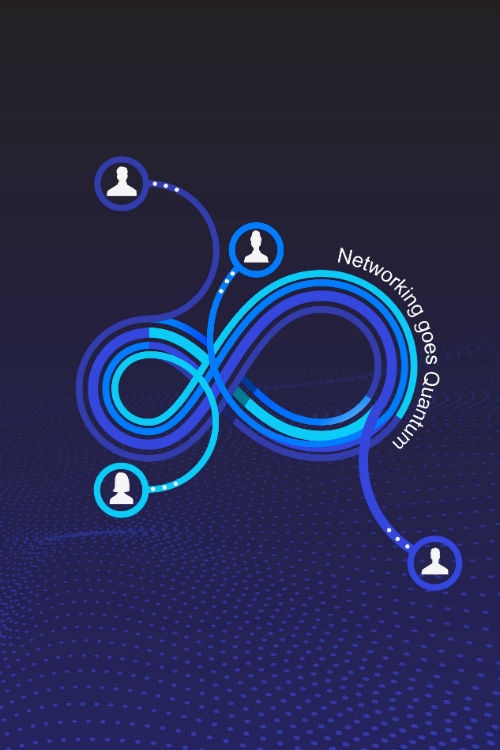Dec 13 2018
Historically, the improved cybersecurity provided by quantum communication has been restricted to two partner exchanges. At present, for the first time, researchers have connected multiple users at the same time on a quantum encrypted network without using trusted nodes.
 An artist’s impression of the entanglement-based quantum network. The infinity symbols represent “entanglement” which is the ability of measurement outcomes of different particles to be correlated instantly regardless of the distance between them. Entanglement is used as a resource to enable every user to securely communicate with every other user. (Image credit: Murali Krishna—Artist/Designer)
An artist’s impression of the entanglement-based quantum network. The infinity symbols represent “entanglement” which is the ability of measurement outcomes of different particles to be correlated instantly regardless of the distance between them. Entanglement is used as a resource to enable every user to securely communicate with every other user. (Image credit: Murali Krishna—Artist/Designer)
Scientists at the Institute of Quantum Optics and Quantum Information (IQOQI) of the Austrian Academy of Sciences, together with a colleague from the Austrian Institute of Technology (AIT), have described on the seamless, simple, secure, and inexpensive network in the recent issue of the journal Nature, published on December 12th, 2018.
Dr Siddarth Joshi, co-author of the paper who recently moved to the University of Bristol and is continuing to create quantum networks in the Quantum Engineering Technology Labs, stated, “We created a very versatile quantum communication network where every user can talk to every other user simultaneously.”
“We plan to build even bigger networks with many more users, with the goal to create a versatile foundation for building a quantum internet.”
The Viennese group realized the long-awaited quantum network by employing an innovative architecture based on a new technique which involves distributing a basic resource of quantum communication—entanglement.
An entangled system is one that is interconnected to such an extent that it is possible to fully describe the individual parts in isolation.
Photons, or entangled light particles, are the basic resource employed in quantum communication to distribute a secure encryption key. The Viennese researchers’ key innovation was in synthesizing photons such that only specific wavelengths entangle with one another.
Similar to a rainbow, the signal was divided into different “colors” and cleverly distributed between the users, who then only needed fundamental modules to connect to the single source of entanglement.
By using quantum entanglement and standard passive telecommunication techniques of wavelength-based multiplexing we were able to interconnect four users in a network architecture that is scalable and requires minimal resources.
Dr Siddarth Joshi, Study Co-Author, University of Bristol
In contrast to earlier efforts to develop such a network, this innovative technology enables all users to communicate with all other users at the same time without the need for using trusted nodes to relay the message. The network is inexpensive, versatile, and reliable as there are no complex steps involved in routing the entanglement to different users.
A significant step in the path toward of a “quantum internet” is the extension of point-to-point connections to networks, and the scientists debate that the four-user network they developed can be scaled to incorporate more connections.
The number of users is limited by available wavelength channels and the desired fully connected network topology. However, we are working on a new scheme that will allow even more users to connect to the network. To achieve this, we plan on improving the scalability of the network presented in the Nature paper by changing the way we multiplex to allocate communication channels to each user. We aim to create a network that can support different types of users in different configurations that can dynamically change depending on current network traffic. The network also requires optimal routing, redundancy of paths and a degree of anonymity.
Dr Siddarth Joshi, Study Co-Author, University of Bristol